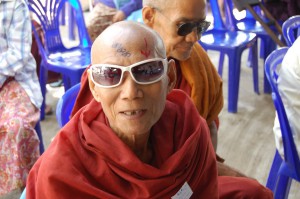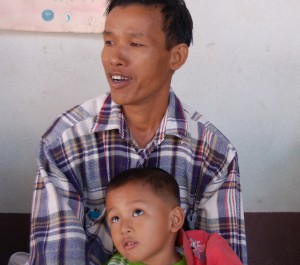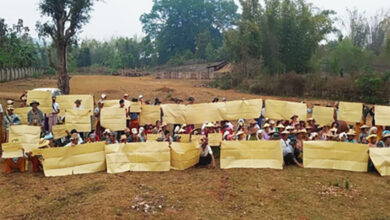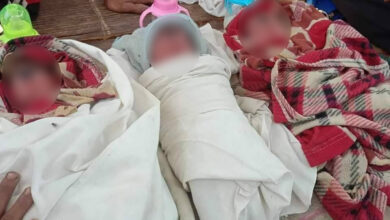Reform is impotent while Burma lacks basic healthcare
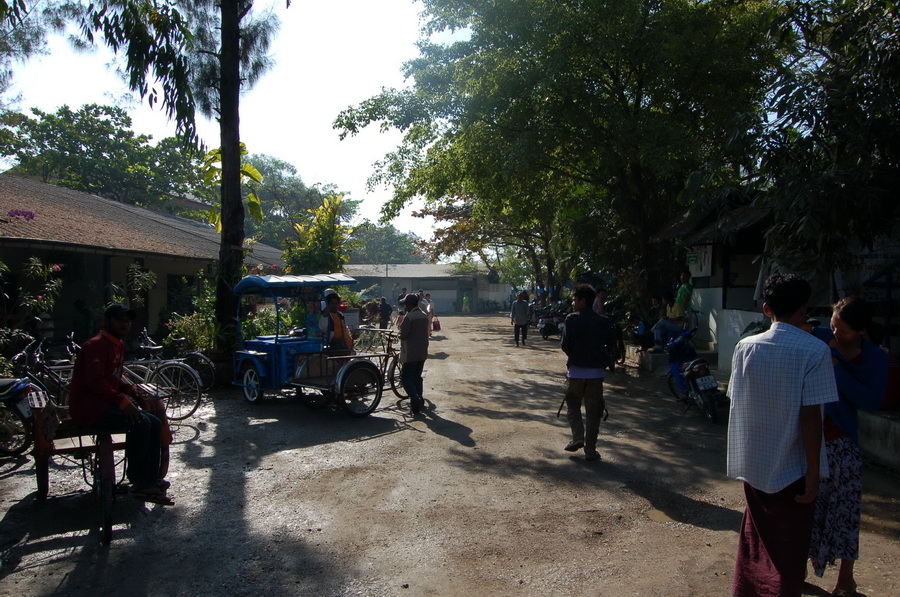
Non-profit NGO clinics along the Thai-Burma border remain the best hope of healthcare for poverty struck people from Burma seeking treatment – economic migrants, refugees and internally displaced people.
A dirt road bustling with activity marks the centre of Mae Tao Clinic in the Thai border town of Mae Sot. The Clinic echoes with the babble of Burmese, and Karen. Many are families — some wait with restless babies in a vaccination queue near the clinic entrance, small groups look out from the shade of waiting areas and hallways, others just sit and wait patiently for loved ones, or stare at the walls. A haphazard motorcade of bikes and pick-up trucks drop off the injured and the ill.
They come to Mae Tao Clinic seeking help that they are unable to access in Burma.
Many of the Clinic’s patients are from Karen State where 60-years of civil war and a government policy of militarisation has long prevented any hope of access to proper health care. Each new arrival is another raw indicator of the lack of basic healthcare in Burma.
An elderly man waits out the front of the eye clinic wearing white-rimmed sunglasses; a grin wrinkles his tanned face. Eh Ka To Mah is a 79-year-old monk from Kru Tue Township in Karen State. The trip to the clinic “wasn’t too difficult” he told Karen News, “I had to pay the driver, but there was no problem on the roads.”
Eh Ka To Mah is getting treatment for cataracts that have progressively gotten worse as he has aged and without an operation to remove them he will soon be blind.
Eh Ka To Mah, is with his daughter, Daw Tae Thee, 50, who travelled to the Clinic to look after her aging father.
“It didn’t take us long [to get to the Clinic], about one day by car,” she says. Daw Tae Thee says she came to the Clinic because the treatment would be prohibitively expensive in Burma. “There is no healthcare in Burma… Here is cheap, we don’t have much money,” she adds, “I came here, it doesn’t cost much and we only have to pay for the trip.”
She brought her dad to the Clinic because it was the only option open to them.
“I heard this from a cousin who stayed in Myawaddy, she told me about this clinic, so I came here. If I knew about this clinic I would have come here earlier, because my dads’ eye is getting a lot worse.”
The Eye-Specialist
Dr Frank Green, a consultant ophthalmologist from Aberdeen, Scotland told Karen News that last year his team had treated over 1000 patients at the Clinic. “Cases of eye trauma due to work related accidents or old age are the most common causes of cataract blindness, such cases are curable… but there aren’t enough people to do the operation required to remove them.”
Dr Green and his team visit the major Thai-Burma border refugee camps at least once a year to treat cases of cataract blindness.
“The rough cost of curing each case is about US$40 if you include feeding the patients and staff costs.”
Not all patients who come to Mae Tao Clinic are seeking eye treatment. Last year the Clinic in its annual report noted that it treated as many as 148,374 people – 32,530 cases turned up at out-patients, 3,422 people were admitted as inpatients, another 13,526 cases received primary eye care and surgery, 15,952 children were seen at the Child Health department, 742 people received eye surgery and 8,335 received eye glasses, 211 new cases needed artificial limbs fitted, 6,038 people required dental treatment and 37,083 slides were sent for malaria testing.
A family of three wait outside Mae Tao Clinic’s surgical department – the mother has a broken shoulder, she came with her husband and young son. The woman declined to be named in the story for security reasons.
Her husband works as a trishaw driver back in Burma and they can’t afford treatment back home.
“My husband works as a trishaw driver… he earns maybe 10,000 kyat (around US$10) on a good day, but normally we earn three or four thousand a day,” she told Karen News.
It took the family two days to reach the clinic.
“We came because in Burma health is expensive… and I already knew about this place… I gave birth to my child here.”
But the wife says it is easier to travel in Burma since the 2010 elections.
“It is better, in a daily livelihood work way… better if we compare the past… it is easier for traders to travel and my husband can hopefully get more income now.”
According to UNICEF in its 2011 State of the World’s Children report, Burma has the 44th highest infant mortality rate out of the 193 countries listed. The country’s looming budget plan for 2012-2013 financial year will be important in highlighting whether recent political gestures by the military-backed government are genuine. The country’s last budget plan allocated a quarter of funds to the military – with just 1.3 percent left for healthcare.
The Doctor
Dr. Vit from the Center for Public Health and Human Rights at John Hopkins University paints a pessimistic picture of Burma’s current health issues.
“Public health is a catastrophe,” he tells Karen News.
“The public system has fallen apart, the most educated health officials have fled, everything is too expensive, and there is no access to the right treatment”.
To make things worse, Dr Vit says.
“Drugs are not often used or given as advertised” making some medicine unhelpful, and potentially dangerous, whilst superbugs are a real concern.
Dr. Vit says implementing meaningful healthcare reform could radically improve the current situation.
“You need four key things to change. The issue of access: people need to travel freely in Burma to reach medical attention. Fund the health system and fund a proper education system that trains medical professionals and end the human rights abuses by the Burma Army.”
Dr Vit says there is a lesson for the Burmese government to be learnt in how Thailand dramatically improved its healthcare system in recent decades. “Nevertheless,” he says, “even if they invested millions from oil and gas revenue… it would still take decades.”
Burma has no functioning healthcare infrastructure of worth and it acknowledged by international health care organisations as one of the poorest countries in Asia. Political reform in Burma will continue to lack sincerity as long as its people have to seek health care in neighbouring countries.

